Name: Mullein, Common
Botanical Name: Verbascum thapsus
Form: wildflower
Parts Used: seeds, greens (somewhat)
Citation: Guenther, K. (2020, January 12) Mullein as wildlife food [Web log post.] Retrieved: readers supply the date, from http://wildfoods4wildlife.com
Getting Started
Mullein is a good beginner forager plant. It is an easy plant to find, easy to identify and the seeds are easy to collect. However, it is not eaten by all that many animals—some birds and chipmunks eat the seeds. Reportedly elk and white-tailed deer nibble the greens, somewhat. Mourning doves are a bird commonly brought into rehabilitation and they are one who eat mullein seeds.
Scrophulariaceae (Figwort Family)
Verbascum (Mullein Genus)
About this Species
Common mullein is a widespread, easy-to-identify plant in all seasons, and is commonly found on disturbed soils. It has tall stalk grows up straight, up to seven feet tall surrounded at the base by a rosette of velvety gray-green leaves. If you just find the rosette of leaves, this indicates where next summer’s stalk and flowers will bloom, as mullein is a biennial and does not flower or go to seed until the second year.
This is a very easy plant to collect seeds from, but all species in Virginia are non-natives.
| Common name | Virginia Verbascum species | Origin | Rare Plant Status |
| Common mullein | V. thapsus | non-native | none |
| Orange mullein | V. phlomoides | non-native | none |
| Moth mullein | V. blattaria | non-native | none |
| White mullein | V. lynchnitus | non-native | none |
Virginia Botanical Associates. (Accessed December 1, 2019). Digital Atlas of the Virginia Flora (http://www.vaplantatlas.org). c/o Virginia Botanical Associates, Blacksburg.
MAP http://plants.usda.gov/core/profile?symbol=VERBA
Key Features to Look For
- Hefty, tall plant, often towers over one’s head.
- Has one primary flower stalk with yellow irregular flowers that bloom over time
- Leaves are all in the bottom half of the plant
- Leaves are thick and with velvety green-gray fuzz top and bottom
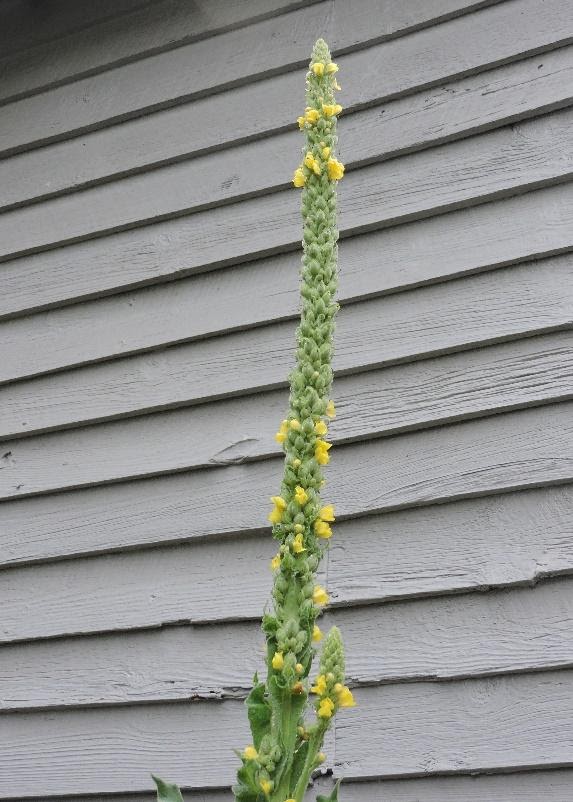
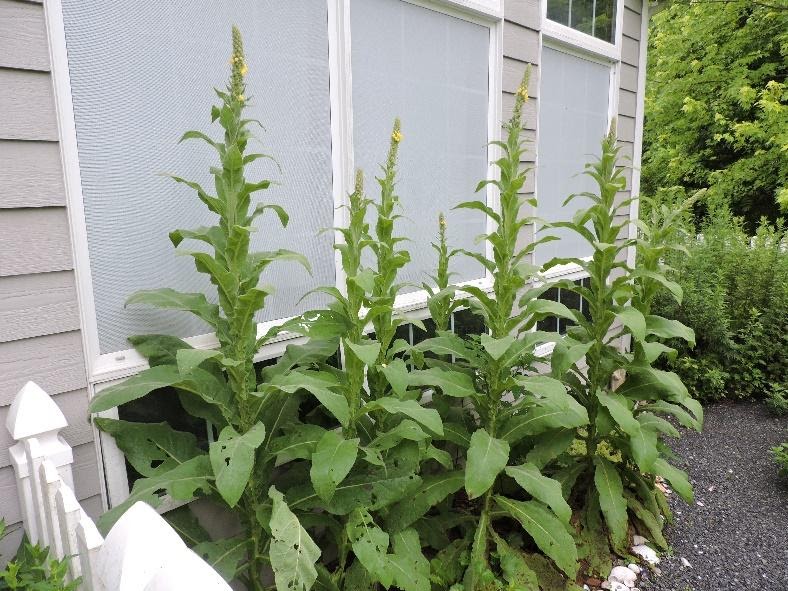
Leaf Description: Large oblong velvety, gray-green leaves, 4-12” long. The largest leaves are at the base. Leaves are alternate upwards along the stalk.
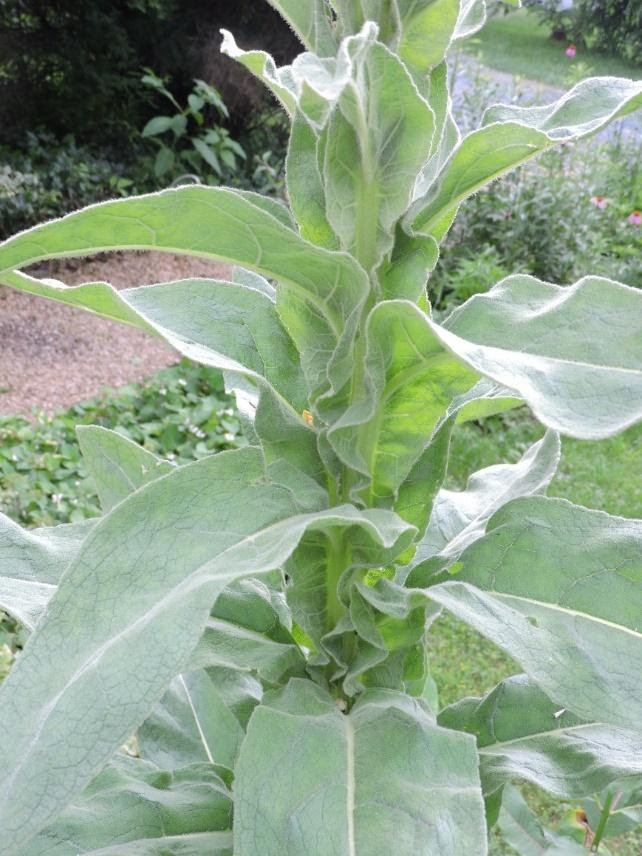
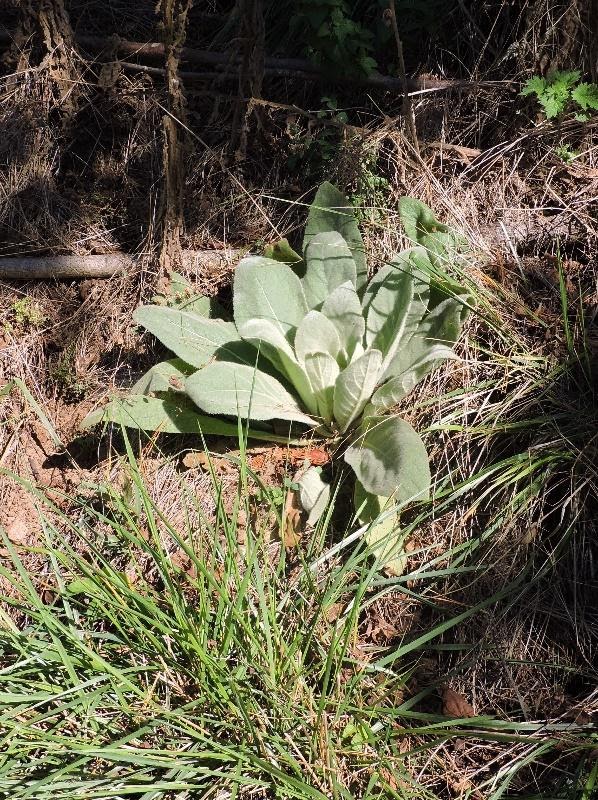
Flower Description: Spike contains many irregular yellow flowers and each flower consists of three slightly larger petals downward and two slightly smaller petals upward. Flowers are up to 1” in diameter. Generally, new flowers proceed to open in an upwards creep up the spike as the season progresses.
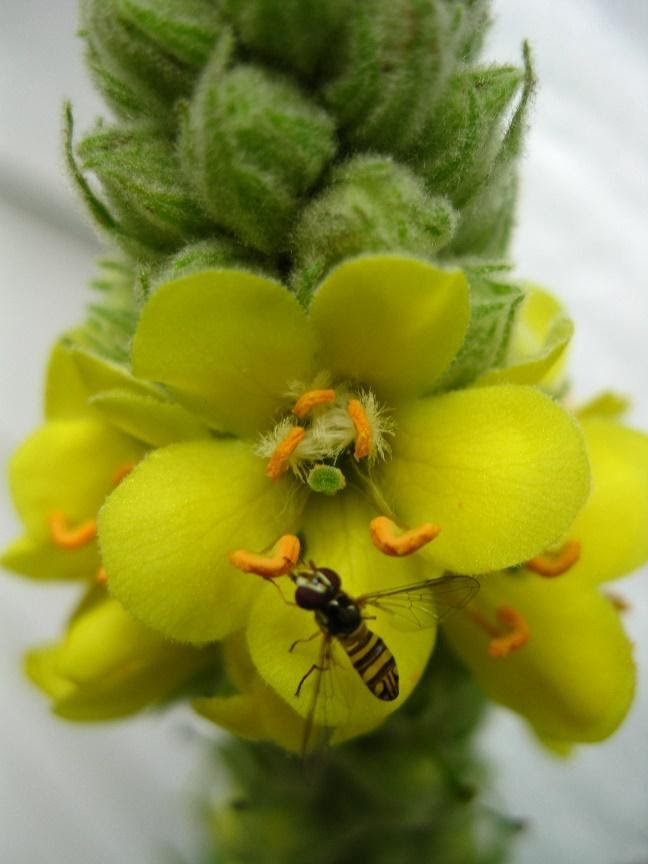

Seed Size: The seeds are minuscule, .05 mm tube-shaped, dark brown-black. Each plant produces hundreds of seeds that are held inside the cup of dried flower parts that forms once the flower turns brown.

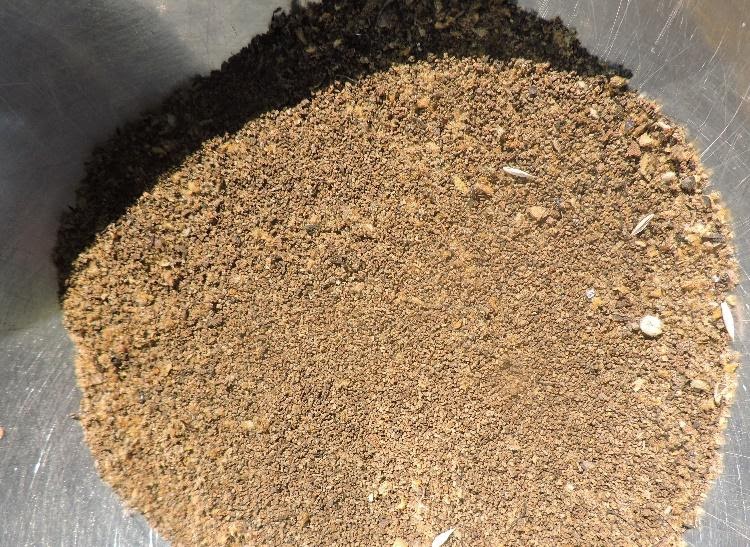
Harvesting
| Jan | Feb | Mar | Apr | May | Jun | Jul | Aug | Sep | Oct | Nov | Dec | ||||||||||||||
|---|---|---|---|---|---|---|---|---|---|---|---|---|---|---|---|---|---|---|---|---|---|---|---|---|---|
| winter | winter | late winter | early spring | spring | late spring | early summer | summer | late summer | early fall | fall | late fall | ||||||||||||||
| seeds | x | x | x | ||||||||||||||||||||||
| greens | x | x | x | x | x | x | x | x | x | x | x | x | x | ||||||||||||
Does this lend itself as a good enrichment item?
Unfortunately, no. While the stalk spikes are durable, the seed spills very easily out of them, so I doubt you could cut, move and install the seed heads without spilling most of the seed.
Harvesting Mullein Seed:
Seed can be collected after flowering and after the entire stalk of flower heads has turned brown, in late summer. Have a clean, dry, 5-gallon bucket or container beside you. Carefully cut the stalk where the flower head begins, without jiggling the flower spike, then decisively turn the stalk upside down into the bucket so the seeds spill into the bucket. Gently tap the flower head against the sides of the bucket to dislodge all the seeds. The tiny seeds will pour out readily if the seeds are fully ripe.
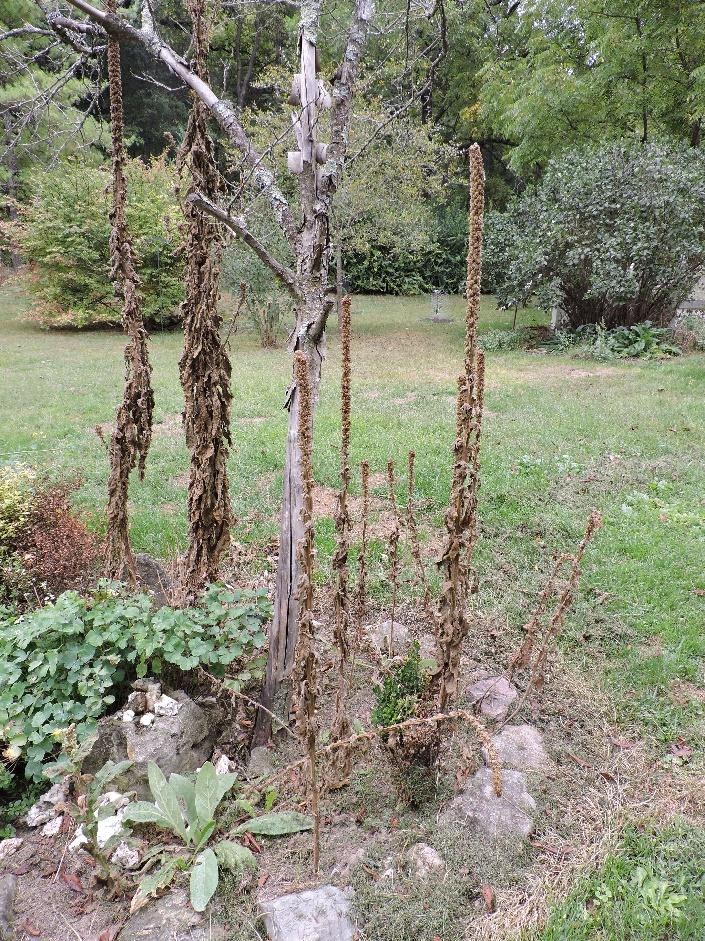
How to Store Seed:
Once cleaned and fully dried, choose a low humidity day—not a rainy day—to jar up your seed.
Glass or metal works best because all plastics are somewhat porous to humidity. Canning jars and lids work well. Place seed in a tightly sealed, glass container and store in a dark, cool area for up to 1 year. Refrigeration and freezing work well. Label the airtight container with the seed name, date of harvest and which animals it should be used for.
If you intend to keep the seed longer than one year, jar up the seeds in two stages. First, jar the seeds up using a desiccant for up to 1 week. Then remove the desiccant and immediately repack the seed into an airtight container. Read more about drying seeds and using desiccants under the tab “Food Harvest, Process and Storage”
Keep stored seed in an airtight glass or metal container in a cool, dark place. Refrigeration and freezing work well, but allow the container to warm to room temperature before opening. Discard any seed that ever appears moldy.
Other Species:
Another related species that grows around me in lesser quantities is moth mullein. Though related, it looks different in almost every way. However, if you want to collect seed from moth mullein, it is not difficult, though you will not collect as great a quantity as you will with common mullein.

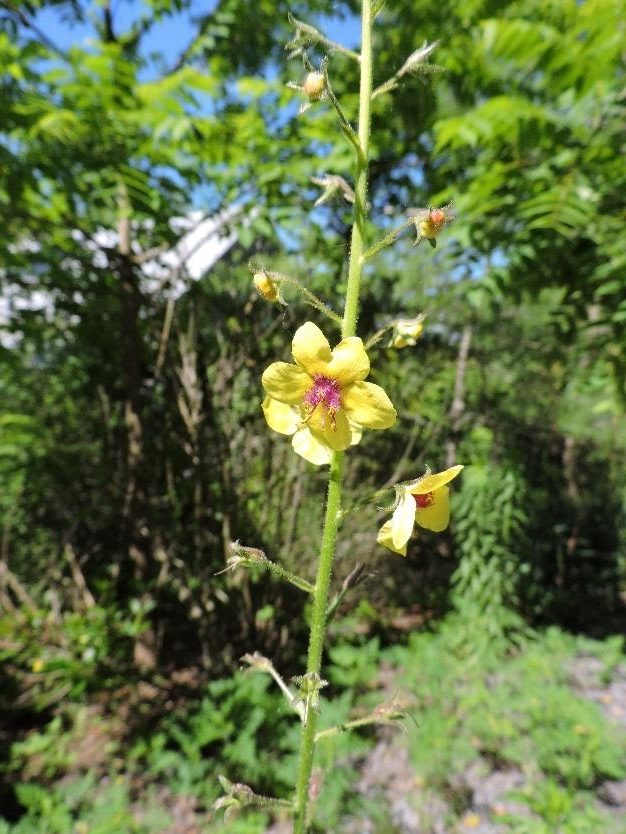



Feed Mullein to:
mullein | (Verbascum spp.) | seeds |
|---|---|---|
Chipmunk, Eastern | Tamias striatus |
|
Bunting, Indigo | Passerina cyanea |
|
Dove, Mourning | Zenaida macroura |
|
Finch, House | Carpodacus mexicanus |
|
Flicker, Northern | Colaptes auratus |
|
Goldfinch, American | Carduelis tristis |
|
Sparrow, Savannah | Passerculus sandwichensis |
|
mullein, common | (Verbascum thapsus) | greens |
Deer, White-tailed | Odocoileus virginianus |
|
Elk, Rocky Mountain | Cervus elaphus |
|
mullein, common | (Verbascum thapsus) | seeds |
Chipmunk, Eastern | Tamias striatus |
|
Book References
Elpel, T.J. (2013) Botany in a Day (APG). Pony, Montana: Hops Press, LLC.
Martin, A.C., Zim, H.S., Nelson, A.L. (1951). American Wildlife and Plants: A Guide to Wildlife Food Habits. New York: Dover Publications.
Scott, M. (2013). Songbird Diet Index. National Wildlife Rehabilitators Association, St. Cloud, MN.
Townsend, J. F. (2015, April) Rare Plants Natural Heritage Technical Report 15-10. (Unpublished Report) Richmond, Virginia: Virginia Department of Conservation and Recreation, Division of Natural Heritage.
Online References
Virginia Botanical Associates. (Accessed December 1, 2019). Digital Atlas of the Virginia Flora (http://www.vaplantatlas.org). c/o Virginia Botanical Associates, Blacksburg.
USDA, NRCS. 2015. The PLANTS Database (http://plants.usda.gov, 24 November 2015). National Plant Data Team, Greensboro, NC 27401-4901 USA.


